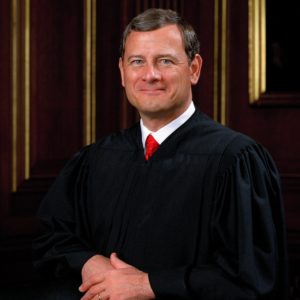The U.S. Supreme Court’s has ruled 5-4 that the Department of Commerce may not include, at least not yet, a citizenship question in the 2020 census. In the same case, the Court also ruled 9-0 that a citizenship question does not conflict with the Constitution or with the Census Act. So the problem is not that a citizenship question is illegal, but rather than the Department of Commerce failed to reinstitute a citizenship question in conformance with the Administrative Procedures Act.
Although all nine justices agreed that the Department stated a legitimate reason for including a citizenship question (better enforcement of the Voting Rights Act), five members of the court found the stated reason to be “pretextual.” In other words, the majority concluded that the administration lied.
Every political action, whether legislative or administrative, has different consequences for different people. But being negatively impacted does not, by itself, establish the grounds for a lawsuit. To have standing in court, one must have a legal right not to suffer the alleged harm, and it must be a legal right a court can remedy. The Court’s recognition that there is no constitutional or statutory prohibition on a citizenship question (and that the alleged harms can therefore result once the Department gets the process right) makes clear that those claiming to be negatively affected by such a question have no legal standing to challenge its inclusion in the census. But the Court rejected the government’s claim that the plaintiffs lacked standing, so we are stuck with a ruling the courts will come to regret.
To anyone not focused exclusively on the partisan consequences of the Court’s decision in Department of Commerce v. New York, these two rulings – yes you can do it but not for the reasons five of us think you did – may be difficult to comprehend. Unfortunately, reading the Court’s opinions will not help. Chief Justice Roberts wrote an opinion Parts I & II of which were joined by all eight justices, Parts III, IV-B, and IV-C by Justices Thomas, Alito, Gorsuch and Kavanaugh, Part IV-A by Justices Thomas, Ginsburg, Breyer, Kagan and Kavanaugh and Part V by Justices Ginsburg, Breyer, Sotomayor and Kagan. Justices Thomas, Breyer and Alito wrote opinions concurring in part and dissenting in part. Whatever one thinks of the apparent substantive rulings, this is judicial decision-making at its worst. One should not need a law degree and a convoluted chart to know what the law is.
The majority’s conclusion that the administration’s reasons for including a citizenship question were “contrived” to cover for ulterior political objectives is bewildering in the context of a constitutionally prescribed process the core purpose of which is apportionment of political representation in Congress. The very same day the Court ruled that courts lack authority to review partisan drawing of congressional districts because it would embroil the courts in politics.
If the court judges the legitimacy of a rule change not on the legality of the rule but on the motivations for the change, it accepts that the status quo was not also influenced by pretextual motivations. But that is unlikely. Why was the citizenship question excised from the general census after 1950 and relegated to the long form addressed to a small fraction of the population? And why did the Obama administration eliminate the long form and ask the citizenship question only on the annual American Community Survey addressed to less than 3% of the population?
It is possible, indeed probable, that these or other changes made over time were politically motivated. But having gone unchallenged as pretextual they became the baseline against which the legitimacy of future changes will be tested. Because there will always be (or could be) political considerations – particularly when the rule in question exists in part to determine political districting – the Court would have been well advised to take its own counsel in the partisan gerrymandering case and stay out of politics.
Justice Thomas is right to worry that “the Court has opened a Pandora’s box of pretext-based challenges to administrative law.” As best they can, administrations of both parties do everything in their power to get the bureaucracy to advance their political agenda. By accepting the political choices of prior administrations as legitimate and questioning the political choices of the current administration as pretextual, even where a clearly legal rationale is proffered, the courts will be engaged, unavoidably, in politics.

